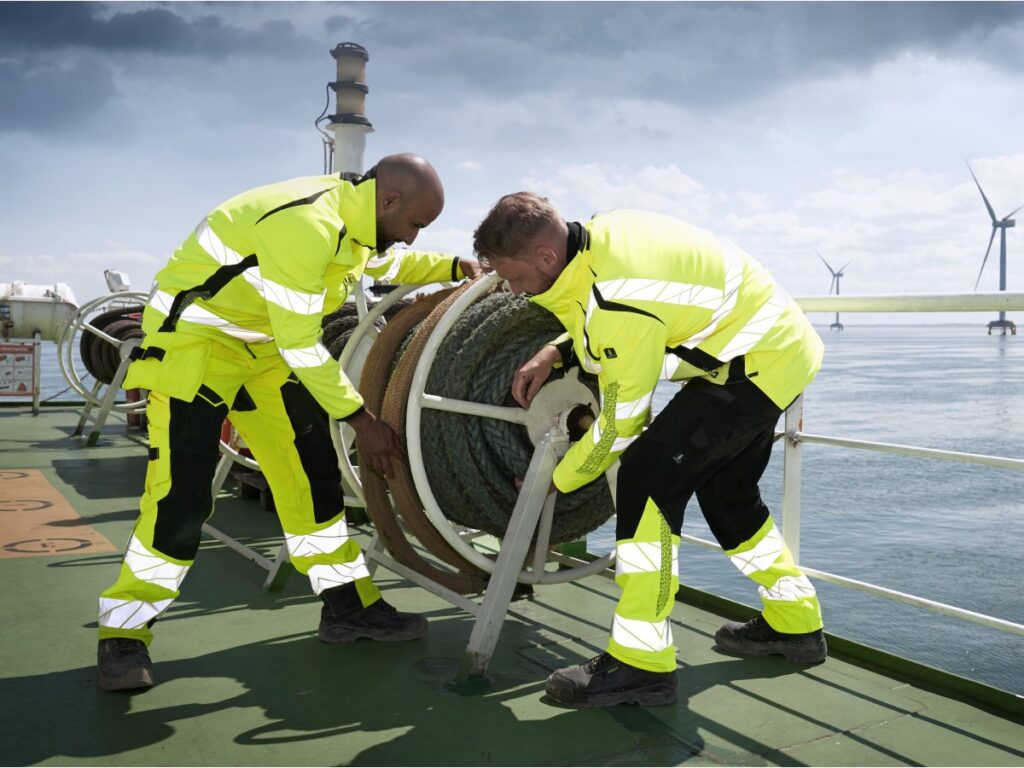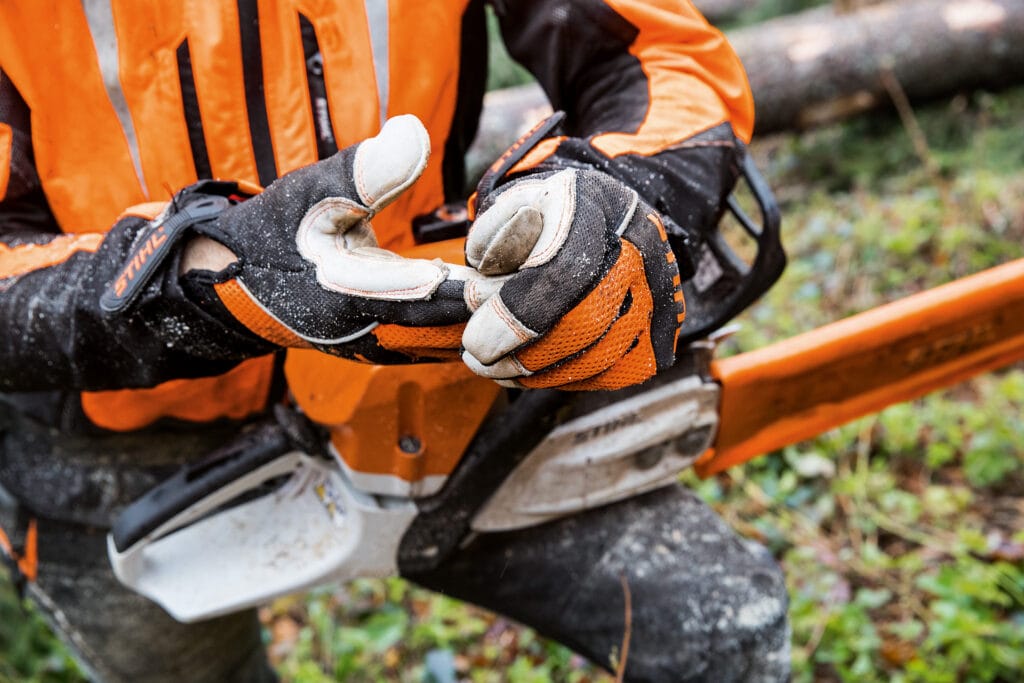
The workwear industry in 2025 is not the same one we knew even three years ago. I’ve been in this business long enough to watch market shifts happen slowly, over years… but lately, it feels like someone hit the fast-forward button. Buyers today are juggling tighter regulations, rapidly changing worker expectations, and a global supply chain that doesn’t always play nice.
It’s not just about finding the cheapest supplier anymore. It’s about securing the right product that meets compliance, sustainability, and comfort without blowing your margins. That’s a tall order—especially when one wrong decision can mean losing a big contract, having goods stuck at customs, or even damaging your brand’s reputation in front of clients.
In this deep dive, I’ll walk you through what I’m seeing on the ground—real stories from buyers in the US, EU, and Asia—and how the smartest ones are positioning themselves to ride the changes instead of being run over by them.
Google Snippet: Quick Answer
In 2025, the global workwear market is shaped by five major forces: sustainability demands, multifunctional design trends, tighter PPE regulations, shorter production lead times, and regional customization. Buyers are prioritizing organic cotton blends, recycled polyester, and stretch fabrics with advanced moisture-wicking and UV protection. Those who adapt early lock in better prices, ensure compliance, and gain a decisive edge in competitive bids.
What’s Driving Demand in 2025
The market is moving for a few very clear reasons—but they all connect to one truth: the expectations around workwear are higher than ever. I’ve seen this firsthand, whether it’s a construction company in Germany rejecting a shipment because the reflective stripes weren’t the exact EN 20471 spec, or a US logistics company losing warehouse staff because uniforms were too hot and itchy in summer.
Here’s what’s pushing demand and shaping purchase decisions this year:
1. Stricter Safety and Hygiene Laws
Governments, especially in the EU and Japan, are rolling out updated PPE standards.
- In France, a buyer told me their supplier failed to update safety vests to the 2023 EN 20471 revision. Customs caught it, and the shipment sat in port for two weeks.
- In Japan, there’s been a stronger focus on fire-retardant clothing in certain manufacturing sectors, after a series of minor factory fires in 2024.
The takeaway? Compliance is now a moving target—you can’t just meet the rules once and forget about them. You need a supplier who keeps up with the updates, and you need to budget time for certificate verification.
2. Eco-Friendly Sourcing Is Now a Requirement
Five years ago, sustainability was “nice to have.” In 2025, it’s written into the contract.
- A large UK retail chain sourcing warehouse uniforms from Asia told me they now require at least 30% recycled polyester in all garments, or they can’t proceed with the order.
- In the US, more buyers are asking for OEKO-TEX Standard 100 certification—not just for marketing, but because big clients demand proof the fabric is safe for skin contact.
Eco requirements can make sourcing trickier. For example, recycled polyester has longer lead times and sometimes slightly higher costs. But buyers who ignore this risk losing bids to competitors who can meet ESG requirements.
3. Worker Comfort and Style Are Becoming Deciding Factors
This might sound small—but it’s not. Worker satisfaction impacts retention, productivity, and safety compliance.
- A logistics company in Texas switched from heavy cotton pants to lightweight mechanical stretch trousers. They reported a 15% drop in complaints about uniforms and a small bump in productivity.
- A German automotive plant introduced polo-style work shirts with subtle branding instead of traditional button-downs, after younger staff said they wanted “less old-school” uniforms.
Workers today don’t just want functional—they want comfortable and, if possible, stylish. Buyers who ignore this may save a few cents per unit but pay for it in higher turnover.
4. Global Supply Chain Adjustments
COVID and geopolitical tensions have reshaped the sourcing map.
- Some buyers who moved production to Vietnam for lower costs are now partially returning to China for faster lead times and better compliance documentation.
- Others are adopting a “China +1” model, sourcing 70% from China and 30% from another country to hedge against disruptions.
This shift affects not just cost, but also how quickly you can respond to trend changes—especially important in industries like retail or events where uniform needs can change overnight.
5. Technology in Workwear
Smart fabrics, RFID tags for uniform tracking, and antibacterial coatings aren’t science fiction anymore.
- A mining company in Australia is testing uniforms with built-in sensors that track worker movement and send alerts in case of a fall.
- In Denmark, a cleaning services provider uses uniforms treated with silver-ion antibacterial finishes to reduce odor and bacteria growth between washes.
While not every buyer needs tech upgrades right now, being aware of what’s coming keeps you ready for when these features become standard.
Bottom line: If you’re sourcing workwear in 2025, you’re playing in a more complex game than ever before. Compliance, comfort, sustainability, and supply chain resilience all matter—and the buyers who balance all four win.
Popular Fabrics and Features
In 2025, fabric choice is not just a technical decision—it’s a strategic one. Buyers aren’t only comparing prices anymore; they’re evaluating the story behind each fabric, the performance in specific environments, and even how it aligns with their clients’ brand values.
Organic Cotton Blends
These blends combine the breathability and softness of cotton with the durability of synthetic fibers.
- Case – UK Distribution Company: They switched from 100% cotton to a 60% organic cotton / 40% recycled polyester blend for warehouse uniforms. The change cut shrinkage rates in half, and the company’s sustainability report featured the upgrade as a key achievement.
- Why It Works: Organic cotton uses less water and fewer pesticides in production, which appeals to eco-conscious clients. The polyester element improves shape retention and lifespan.
Recycled Polyester
Recycled polyester, made from post-consumer plastics like PET bottles, is quickly becoming a baseline expectation in the EU market.
- Case – Dutch Construction Supplier: They won a city contract worth €2.5M by meeting the requirement for 50% recycled materials in all workwear. Their competitors couldn’t match the fabric spec in time.
- Why It Works: It offers the same tensile strength as virgin polyester but reduces environmental impact—perfect for companies with ESG targets.
Mechanical Stretch Fabrics
These provide flexibility without relying on expensive elastane fibers.
- Case – US Delivery Service: Drivers reported fewer seam tears in trousers when switching to mechanical stretch twill. Repairs dropped by 30% in one quarter.
- Why It Works: It delivers comfort and durability while avoiding the long-term stretch degradation that elastane can suffer.
Moisture-Wicking Finishes
Once limited to sportswear, moisture-wicking technology is now a must for high-activity jobs.
- Case – Singapore Port Authority: Dock workers received polo shirts with quick-dry finishes. Employee feedback mentioned feeling “less sticky” during humid shifts, which boosted morale in post-shift surveys.
- Why It Works: Keeps workers dry, reduces chafing, and can even help maintain focus and productivity.
UV-Protective Coatings
Outdoor workers are at risk of sun damage, even in cloudy conditions.
- Case – Australian Highway Maintenance Contractor: Introduced UV-protective high-vis vests after a spike in reported sunburn incidents. Workers noticed less heat buildup compared to previous gear.
- Why It Works: Meets health and safety requirements while also improving worker comfort in sunny climates.
Reinforced Stress Points
Small design choices—like bar tacks on pocket corners—make a big difference.
- Case – Canadian Oilfield Services: Reinforced knee panels in overalls extended garment life by four months on average, saving $48,000 annually in replacements.
- Why It Works: Extends product lifespan, reducing long-term costs.
Material Selection Insights
Choosing the right fabric in 2025 means thinking beyond the immediate order—you need to consider availability, compliance, and how your clients will use the garments.
Organic Cotton + Polyester
Why choose it: It’s the go-to for balancing comfort and durability, especially for indoor jobs or mild climates.
Watch out for: Some suppliers label conventional cotton as “organic.” Always ask for GOTS (Global Organic Textile Standard) certification.
Pro Tip: In B2B pitches, highlight the blend’s reduced shrinkage and extended wear life.
Recycled Polyester
Why choose it: Great sustainability credentials, often required for public contracts in Europe.
Watch out for: Longer lead times—mills producing quality recycled fibers are in high demand.
Pro Tip: Pre-book fabric allocations with your supplier to avoid delays.
Stretch Twill
Why choose it: Offers comfort without compromising structure—ideal for uniforms in logistics or service industries.
Watch out for: Not all stretch twills are equal; ask for tear-strength tests.
Pro Tip: Present it as a cost-saving measure by reducing garment damage rates.
Ripstop Fabrics
Why choose it: The grid weave prevents tears from spreading—essential for heavy-duty applications.
Watch out for: Can feel stiff if not finished properly; ensure fabric finishing matches end-use needs.
Pro Tip: Great selling point for industries like construction, forestry, or utilities.
✅ Pro Tip: Always request fabric performance test reports before confirming bulk orders. This can prevent costly disputes later—especially if garments fail in the field.
Regional Market Trends
Global demand for workwear is not uniform—each region has its own quirks, driven by climate, culture, and regulations.
United States
The US market is seeing a push for lightweight, breathable uniforms in hot regions, and rugged, insulated gear in colder states.
- Case – Texas Warehousing Firm: Shifted from heavy denim uniforms to poly-cotton blends with moisture-wicking treatment for summer. Employee absenteeism dropped 7% in heatwave months.
- Buying Tip: Offer clients climate-specific fabric options; “one-size-fits-all” no longer works.
European Union
Sustainability and compliance dominate.
- Case – German Municipal Contract: Won by providing workwear with EN 343 waterproofing and 40% recycled content. Competitors couldn’t meet both specs in time.
- Buying Tip: Always stay ahead of EN standard updates—municipal buyers in particular are unforgiving about outdated certificates.
Japan
Japanese buyers value precision, fit, and branding above all else.
- Case – Tokyo Engineering Firm: Paid 15% more per unit for uniforms with custom-tailored fits and embroidered name tags. Their logic: better appearance boosts corporate image and staff pride.
- Buying Tip: Be ready to offer customization services and flawless QC—small defects will be noticed.
Middle East
High temperatures and sun exposure are the main challenges.
- Case – UAE Construction Supplier: Introduced UV-blocking lightweight overalls with ventilation panels, reducing heat-related complaints by 40%.
- Buying Tip: Fabrics must balance protection with airflow; heavier garments are often rejected.
Australia & New Zealand
Outdoor industries dominate, making UV protection and durability essential.
- Case – Queensland Road Maintenance Crew: Adopted hi-vis shirts with UPF 50+ ratings. Worker compliance with PPE rules improved because the shirts were “cooler” to wear.
- Buying Tip: Offer garments tested to AS/NZS standards to fast-track approvals.
Common Procurement Mistakes
After years of working with international buyers, I’ve noticed that the same mistakes keep showing up—whether the client is ordering 500 jackets or 50,000. In 2025, with compliance rules tightening and lead times under pressure, these mistakes can cost more than ever.
1. Failing to Confirm Compliance Certificates Before Shipment
Real Story – UK Rail Contract:
A British buyer lost a £1.2M municipal contract because their hi-vis jackets had outdated EN 20471 certification. Customs flagged the issue, the garments were rejected, and there wasn’t enough time to reorder before the project started.
Avoid It: Always request scanned copies of compliance certificates before production starts. Ideally, do a pre-shipment compliance audit.
2. Overlooking Fabric Comfort When Chasing the Lowest Price
Real Story – US Retail Uniforms:
A retail chain in Florida went for the cheapest poly-cotton blend available. Within two months, employees complained about stiffness and heat. Staff turnover jumped, and they had to replace the uniforms—doubling the cost.
Avoid It: If your end-users won’t wear the garment comfortably, the contract will fail no matter how low the unit price.
3. Relying on a Single Supplier for Specialized Materials
Real Story – French Emergency Services:
Their sole fabric supplier ran out of certified flame-retardant fabric. Result: delayed deliveries, contract penalties, and reputational damage.
Avoid It: For critical items, have at least two qualified suppliers. This is especially important for niche PPE fabrics.
4. Ignoring Regional Climate Requirements
Real Story – Middle East Oilfield Uniforms:
A European supplier provided heavy, lined coveralls designed for cold climates. Workers refused to wear them in 45°C heat, and the buyer had to scramble for replacements.
Avoid It: Always match garments to the operating climate. Heat and humidity can be just as dangerous as cold.
5. Assuming “Standard” Means the Same Everywhere
An “S” size in Japan may not be the same as an “S” in the US.
Avoid It: Request size charts and garment samples for approval before mass production.
Cost-Benefit Snapshot
Investing in the right workwear up front can save tens—or hundreds—of thousands over the life of a contract.
| Scenario | Without Trend Adaptation | With Trend Adaptation | Annual Savings |
|---|---|---|---|
| Customs rejection due to non-compliance | $50,000+ loss in one shipment | $1,200 for pre-shipment audit | $48,800 |
| Worker turnover from uncomfortable gear | 12% staff loss | 4% staff loss | $22,000 |
| Lost bids without eco-compliance | 3 contracts lost worth $150K each | 3 contracts won with recycled fabric | $150,000 |
| Delays from single-source fabric supply | 6 weeks late, $30,000 penalties | 2 suppliers, on-time delivery | $30,000 |
Buyer FAQ
Q1: Is recycled polyester as durable as virgin polyester?
A: Yes—when sourced from reputable mills, recycled polyester matches the strength and abrasion resistance of virgin fibers. Just ensure the supplier can provide performance test results.
Q2: Do I need EN certification for US-bound workwear?
A: Not mandatory, but EN-certified garments can be a strong selling point, especially when competing for contracts with strict safety requirements.
Q3: How can I reduce lead times in 2025?
A: Pre-book fabric allocations, provide accurate forecasts, and consider “China +1” sourcing to spread risk.
Q4: What’s the best way to verify a supplier’s certificate is real?
A: Contact the issuing body directly or use their online verification portal. Be cautious of scanned documents with altered issue dates.
Q5: How often should PPE be replaced?
A: It depends on the environment. High-wear items like gloves or boots in heavy industry may need replacing every 3–6 months; jackets or trousers may last 12–24 months.
Procurement Checklist
- [ ] Verified compliance certificates (EN, ISO, OEKO-TEX) before production
- [ ] Eco-friendly material sourcing options confirmed
- [ ] Regional climate considerations built into garment design
- [ ] Multiple supplier options for critical fabrics
- [ ] Pre-shipment quality and compliance inspection scheduled
- [ ] Fabric test reports for strength, shrinkage, and colorfastness
- [ ] Size charts approved with samples before mass run
- [ ] Contract clauses for late delivery penalties agreed with supplier
- [ ] Inventory buffer plan in case of unexpected demand
- [ ] Communication schedule with supplier during production
Conclusion
In 2025, buying workwear isn’t just about placing orders—it’s about anticipating challenges before they cost you money. The smartest buyers I work with are not the ones who chase the absolute lowest unit price. They’re the ones who balance price with compliance, sustainability, comfort, and supplier reliability.
Zion Zhang
Recent Posts
 PPE Distributor Success Stories: From Small Orders to Large Contracts2025年8月20日I’ll never forget the story of a small distributor in […]
PPE Distributor Success Stories: From Small Orders to Large Contracts2025年8月20日I’ll never forget the story of a small distributor in […] How to Build a Strong PPE Sales Channel in Emerging Markets: A Buyer’s Guide2025年8月20日I was in a meeting with a distributor from Lagos, Nigeria, […]
How to Build a Strong PPE Sales Channel in Emerging Markets: A Buyer’s Guide2025年8月20日I was in a meeting with a distributor from Lagos, Nigeria, […] PPE Supplier Risk Management: How to Avoid Supply Chain Failures2025年8月20日One of the most valuable lessons I’ve learned in the PPE […]
PPE Supplier Risk Management: How to Avoid Supply Chain Failures2025年8月20日One of the most valuable lessons I’ve learned in the PPE […] PPE Quality Inspection: Buyer Case Studies2025年8月20日When you’re sourcing PPE from international suppliers, […]
PPE Quality Inspection: Buyer Case Studies2025年8月20日When you’re sourcing PPE from international suppliers, […] PPE Negotiation Tactics for Emerging Markets: A Buyer’s Guide2025年8月20日When I first started working in the PPE industry, I learned […]
PPE Negotiation Tactics for Emerging Markets: A Buyer’s Guide2025年8月20日When I first started working in the PPE industry, I learned […] Customizing Workwear & PPE for Local Markets: A Practical Guide2025年8月20日When I first started working in the PPE industry, I saw a […]
Customizing Workwear & PPE for Local Markets: A Practical Guide2025年8月20日When I first started working in the PPE industry, I saw a […]
CONTACT US
- Feel free to contact us any time. We will get back to you as soon as we can!
- +86-17330061805
